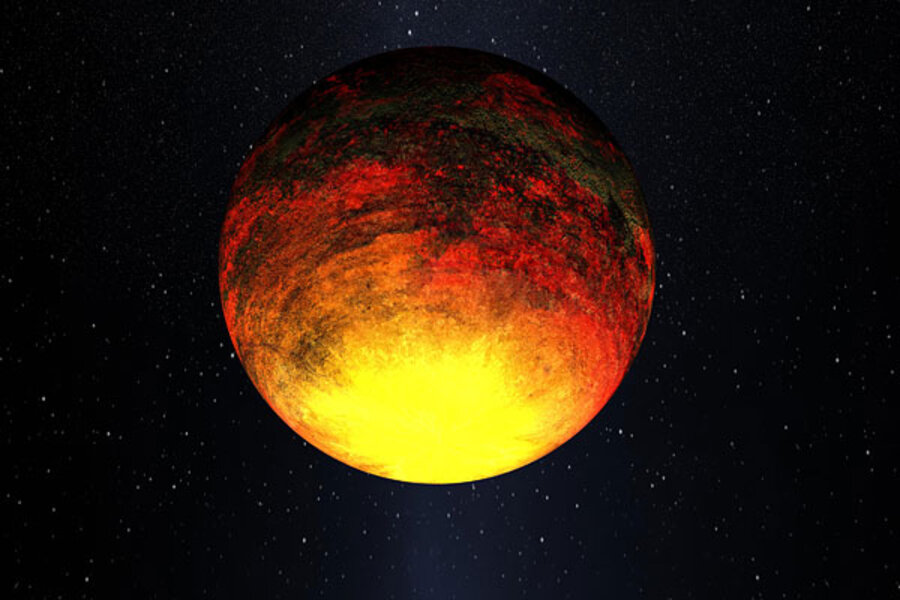Before Kepler found its first Goldilocks planet-candidate in Kepler-22b, it achieved another planet-finding first. Kepler-10b was the first-ever confirmed Earth-size rocky planet outside our solar system.
It radius is only 1.4 times the size of Earth's, and the discovery of such a small planet-candidate was heralded as historic when it was announced in January 2011.
But the comparisons with Earth virtually end there. The planet is so close to its star – 20 times closer than Mercury is to the sun – that its orbit lasts only 20 hours and 10 minutes. Its sun-facing side is estimated to be 2,500 F, so hot that parts of its surface could be molten. Sun-seared flecks of the planet could trail behind it, comet-like.
Moreover, despite the fact that it is about the same size as Earth, Kepler-10b is 4.5 times more massive and denser than iron, giving it a gravitational field twice as strong as Earth's. Some scientists posit Kepler-10b could be the core of a gas-giant planet whose atmosphere has boiled away as it moved nearer its star.








